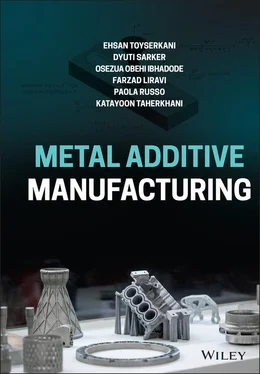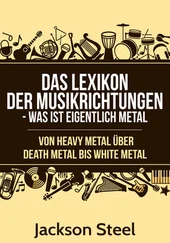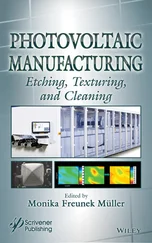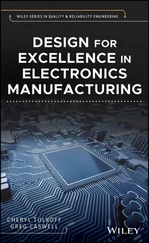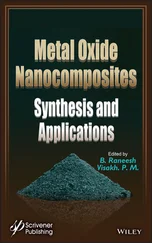Ehsan Toyserkani - Metal Additive Manufacturing
Здесь есть возможность читать онлайн «Ehsan Toyserkani - Metal Additive Manufacturing» — ознакомительный отрывок электронной книги совершенно бесплатно, а после прочтения отрывка купить полную версию. В некоторых случаях можно слушать аудио, скачать через торрент в формате fb2 и присутствует краткое содержание. Жанр: unrecognised, на английском языке. Описание произведения, (предисловие) а так же отзывы посетителей доступны на портале библиотеки ЛибКат.
- Название:Metal Additive Manufacturing
- Автор:
- Жанр:
- Год:неизвестен
- ISBN:нет данных
- Рейтинг книги:5 / 5. Голосов: 1
-
Избранное:Добавить в избранное
- Отзывы:
-
Ваша оценка:
- 100
- 1
- 2
- 3
- 4
- 5
Metal Additive Manufacturing: краткое содержание, описание и аннотация
Предлагаем к чтению аннотацию, описание, краткое содержание или предисловие (зависит от того, что написал сам автор книги «Metal Additive Manufacturing»). Если вы не нашли необходимую информацию о книге — напишите в комментариях, мы постараемся отыскать её.
A comprehensive review of additive manufacturing processes for metallic structures Metal Additive Manufacturing
Metal Additive Manufacturing
Metal Additive Manufacturing — читать онлайн ознакомительный отрывок
Ниже представлен текст книги, разбитый по страницам. Система сохранения места последней прочитанной страницы, позволяет с удобством читать онлайн бесплатно книгу «Metal Additive Manufacturing», без необходимости каждый раз заново искать на чём Вы остановились. Поставьте закладку, и сможете в любой момент перейти на страницу, на которой закончили чтение.
Интервал:
Закладка:
However, modern AM history starts in 1980s when computer features provided unique opportunities for people to think out of the box and introduce the first AM processes. AM first emerged in 1987 with the idea of Charles Hull, who successfully acquired a patent for his Stereolithography Apparatus, a process that solidifies thin layers of photopolymer using a laser beam. This patent opened venues for a few more 3D printing technologies in the late 1980s. Selective Laser Sintering (SLS), a method that uses a laser beam to sinter metal powder particle to form a solid object, was developed by Carl Deckard at the University of Texas in Austin.
S. Scott Crump and Lisa Crump developed another 3D printing technology based on material extrusion in the 1980s in which a material is heated and extruded through a nozzle to create an object layer by layer. The technology was called Fused Deposition Modeling (FDM), and it is now known as material extrusion. FDM is the most commonly used AM technology as of 2020.
In the 1990s, many new technologies, including Direct Metal Laser Sintering or so‐called Selective Laser Melting (SLM) and Binder Jetting (BJ), were developed. The binder jetting was developed in 1993 in the Massachusetts Institute of Technology (MIT) based on an inkjet process to create 3D objects by gluing metal or ceramic powder particles.
Cost of AM machines was starting to decrease in 2000s, helping the technology to be more accessible and adopted. New AM technologies such as material jetting have been emerging and innovation in this field is at high. The internet has continued to increase accessibility to AM when open‐source online libraries for AM digital models are growing rapidly. The 2020 pandemic has proved that such accessibility to digital files and the availability of inexpensive 3D printers can help the community to fill the gap in the medical supplies. There have been many stories over the internet indicating that regular people printed parts of face shields in the period that the supply chain was interrupted due to the pandemic. This feature is now encouraging industry to pay more attention to localized manufacturing to be able to address on‐demand manufacturing with minimum dependencies to foreign countries.
When the skill gap is one of the major issues in the adoption of AM to industry, AM‐based courses have started to be incorporated in schools, colleges, and universities curriculums to meaningfully teach AM to youth. Knowledge of AM concepts, technology, and software is a crucial element for this paradigm shift, and efforts are underway to fully integrate them in educational platforms.
1.2 AM Standard Definition and Classification
The American Society for Testing and Materials (ASTM) and International Standards Organization (ISO) have jointly established two committees to develop standards for the AM industry. The joint committees have proposed the definition of AM based on an active standard of ASTM ISO/ASTM52900, developed by Subcommittee F42.91, as
“Additive manufacturing (AM) is process of joining materials to make parts from 3D model data, usually layer upon layer, as opposed to subtractive manufacturing and formative manufacturing methodologies.”
This standard also elaborates on the functionality of manufactured parts as
The functionality of a manufactured object is derived from the combination of the object's geometry and properties. In order to achieve this combination, a manufacturing process is made up of a series of operations and sub‐processes that bring the shape of the intended geometry to a material capable of possessing the desired properties. The shaping of materials into objects within a manufacturing process can be achieved by one, or combinations of three basic principles: Formative shaping, subtractive shaping and additive shaping.
The same standard categorizes AM into seven processes as:
Binder Jetting
Directed Energy Deposition
Material Extrusion
Material Jetting
Powder Bed Fusion
Sheet Lamination
VAT Photopolymerization
The same standard briefly defines each of these AM processes:
Binder jetting, an additive manufacturing process in which a liquid bonding agent is selectively deposited to join powder materials.
Directed energy deposition, an additive manufacturing process in which focused thermal energy is used to fuse materials by melting as they are being deposited. Note, “Focused thermal energy” means that an energy source (e.g. laser, electron beam, or plasma arc) is focused to melt the materials being deposited.
Material extrusion, an additive manufacturing process in which material is selectively dispensed through a nozzle or orifice.
Material jetting, an additive manufacturing process in which droplets of build material are selectively deposited. Note: Example materials include photopolymer and wax.
Powder bed fusion, an additive manufacturing process in which thermal energy selectively fuses regions of a powder bed.
Sheet lamination, an additive manufacturing process in which sheets of material are bonded to form a part.
Vat photopolymerization, an additive manufacturing process in which liquid photopolymer in a vat is selectively cured by light‐activated polymerization.
From these processes, almost all have been used for metal AM. However, industry has embraced the following processes for metal manufacturing more widely (note that the sequence shows the domination of each process in the market): (i) Powder Bed Fusion, (ii) Directed Energy Deposition, (iii) Binder Jetting, (iv) Material Extrusion, (v) Material Jetting, and (vi) Sheet Lamination. The first three are the most popular technologies for metal AM. In Chapter 2, these processes are explained in detail.
In all these processes, when it comes to metal AM, several main concepts are shared: (i) motion systems, (ii) energy or binding sources, and (iii) material delivery mechanisms. Chapter 3will explain the main components used in the three major metal AM processes.
1.3 Why Metal Additive Manufacturing?
From the early days of AM, the technology has been evolved substantially. Advancement after advancement in AM is announced almost daily. While AM has been substantially changed from 30 years ago, it will be unrecognizable form the current status in 2030. But why such enthusiasm exists in industry and academia to try to understand metal AM and work hard to address its challenges and adopt it to their products? There are several main factors for this motivation:
On‐demand low‐cost rapid prototyping: One of the major applications of AM is the manufacture of functional prototypes. Such prototyping usually carries at a fraction of the cost compared with other conventional processes and at usually non‐disputable speeds. This rapid turnaround usually accelerates the design cycle (design, test, revision, and redesign). Products such as molds that would require more than 4–6 months to develop can be ready for operation in 2–3 months if being made by AM.
Simpler supply chain for effective low‐volume production: Low‐volume niche production usually requires more investment. Due to this issue, conventional manufacturers usually do not embrace low‐volume production; however, AM companies can level this niche. Many time‐consuming and expensive manufacturing techniques can be superseded by rapid and efficient metal AM for low‐volume manufacturing. However, for mass production, AM is still lagging behind conventional techniques such as casting and forging. One of the reasons of this feature is that AM usually needs a simpler supply chain with fewer players involved. Although AM's supply chain is still under development by industry, it is expected to see more and more low‐volume manufacturing by AM as the supply chain is reliably in place. Lowering the AM material costs will be another factor to foster AM adoption for low‐volume manufacturing when the technology moves toward series manufacturing eventually. Initial costs are usually lower for AM than conventional methods because of the minimum need for tools and jig/fixtures needed for assembly costs. In conventional manufacturing (e.g. casting), each part needs a unique mold. To compensate for the cost of tools for each identical part, the number of products should be very high. AM does not usually need any specialized tooling; therefore, there are essentially no initial costs (called fixed costs too). Due to this saving, it is possible to get to the breakeven point sooner and make profits even with lower volumes.
Читать дальшеИнтервал:
Закладка:
Похожие книги на «Metal Additive Manufacturing»
Представляем Вашему вниманию похожие книги на «Metal Additive Manufacturing» списком для выбора. Мы отобрали схожую по названию и смыслу литературу в надежде предоставить читателям больше вариантов отыскать новые, интересные, ещё непрочитанные произведения.
Обсуждение, отзывы о книге «Metal Additive Manufacturing» и просто собственные мнения читателей. Оставьте ваши комментарии, напишите, что Вы думаете о произведении, его смысле или главных героях. Укажите что конкретно понравилось, а что нет, и почему Вы так считаете.
